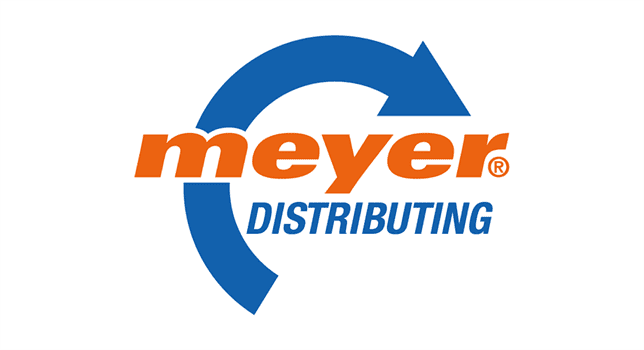Introduction to Dropshipping

Definition of Dropshipping
Dropshipping is a retail fulfillment method where a store doesn’t keep the products it sells in stock. Instead, when a customer purchases a product, the retailer forwards the order to a dropshipping supplier who ships it directly to the customer.
Brief Overview of the Dropshipping Process
The dropshipping process involves three main parties: the customer, the retailer, and the supplier. When a customer places an order, the retailer forwards the order details to the supplier, who then handles the product fulfillment and shipping.
Importance of Dropshipping in the E-commerce Industry
Dropshipping has gained popularity in the e-commerce industry due to its low barriers to entry and the ability to scale businesses quickly. With platforms like Amazon and Shopify, entrepreneurs can establish dropshipping businesses without the need for significant upfront investment or inventory management.
How Dropshipping Works
Understanding the dropshipping process is crucial for anyone considering this business model. In this section, we will explore the key roles involved in dropshipping, the step-by-step process, and the importance of technology and automation in making dropshipping businesses efficient and successful.
Roles Involved in Dropshipping
There are three main roles in the dropshipping model:
- Dropshipping suppliers: These are the manufacturers or wholesalers who provide products for retailers to sell. They handle the inventory and shipping on behalf of the retailers.
- Retailers: These are the business owners who run the online store and sell products to customers. They are responsible for marketing, customer service, and forwarding orders to the suppliers.
- Customers: These are the individuals who purchase products from the retailer’s online store.
Dropshipping Process Explained
The dropshipping process can be broken down into three primary steps:
- Customer places an order with the retailer: The customer visits the retailer’s website, selects a product, and completes the purchase.
- Retailer forwards the order to the supplier: Upon receiving the order, the retailer sends the order details to the dropshipping supplier, who is responsible for fulfilling the order.
- Supplier ships the product directly to the customer: The supplier packages and ships the product directly to the customer, without the retailer ever handling the physical product.
Importance of Technology and Automation in Dropshipping
Technology and automation play a significant role in the success of dropshipping businesses. Platforms like Amazon and Shopify have made it easier for retailers to set up and manage their online stores, while various tools and apps help automate tasks such as order processing, inventory management, and tracking shipments. This allows dropshipping businesses to run more efficiently and scale quickly, ultimately leading to higher profits and success.
Popular Dropshipping Platforms
As dropshipping has become a popular business model, several platforms have emerged to cater to the needs of dropshipping entrepreneurs. In this section, we will explore two of the most popular platforms for dropshipping businesses: Amazon and Shopify.
Amazon Dropshipping
Amazon, the world’s largest online marketplace, has a specific dropshipping program that allows sellers to list and sell products without holding any inventory. Here’s how it works:
When a customer orders a product from an Amazon dropshipping seller, the seller forwards the order details to their dropshipping supplier, who ships the product directly to the customer. This process enables the seller to offer a wide range of products without the need for significant upfront investment in inventory.
There are numerous benefits to dropshipping on Amazon, including access to a massive customer base, a trusted platform, and streamlined order processing. However, there are also challenges such as increased competition, lower profit margins, and strict seller guidelines that must be adhered to.
Dropshipping on Shopify
Shopify is another popular platform for dropshipping businesses. It is an e-commerce platform that allows entrepreneurs to create and manage their own online store. Dropshipping with Shopify works similarly to Amazon, with the main difference being that the seller operates their own independent online store rather than listing products on a marketplace.
Some of the benefits of dropshipping on Shopify include the ability to fully customize your store, a wide range of apps and integrations to help automate processes, and a supportive community of fellow entrepreneurs. However, there are also challenges such as the need for marketing and driving traffic to your store, as well as the potential for higher fees depending on your chosen subscription plan.
In conclusion, both Amazon and Shopify are popular platforms for dropshipping businesses, each with its own unique set of benefits and challenges. Choosing the right platform depends on your specific needs, preferences, and goals as a dropshipping entrepreneur.
Benefits of Dropshipping
As an e-commerce business model, dropshipping has gained popularity due to its numerous advantages. In this section, we will explore some of the key benefits that make dropshipping an attractive option for entrepreneurs looking to venture into the world of online retail.
Low Upfront Capital Required: One of the most significant benefits of dropshipping is the minimal upfront investment needed to start a business. Since retailers do not need to purchase inventory in bulk or maintain a physical warehouse, they can launch their online store with minimal financial risk. This feature makes it easier for entrepreneurs to enter the market and test their ideas without substantial financial commitments.Easy to Start: Setting up a dropshipping store is relatively simple, especially when using popular platforms like Amazon or Shopify. Retailers can quickly create an online store, choose a range of products to sell, and partner with dropshipping suppliers to handle inventory and fulfillment. This ease of setup allows entrepreneurs to focus on marketing, customer service, and scaling their business.
Low Overhead: Dropshipping businesses have lower overhead costs compared to traditional retail stores. There is no need to maintain a physical storefront or warehouse, which significantly reduces operational expenses. Additionally, retailers can save on staffing costs as they do not require employees to manage inventory, packaging, or shipping.
Flexible Location: Since dropshipping is primarily conducted online, retailers can operate their business from virtually any location with an internet connection. This flexibility allows entrepreneurs to work from home or while traveling, providing them with increased freedom and work-life balance.
Wide Selection of Products to Sell: Dropshipping retailers can offer a vast array of products without the need to stock them. By partnering with various dropshipping suppliers, they can easily expand their product offerings and cater to a diverse customer base. This flexibility allows businesses to adapt to market trends and explore new niches quickly.
Easier to Test and Scale: Dropshipping makes it easier for businesses to test new products and scale their operations. Retailers can quickly add or remove products from their store without worrying about unsold inventory or sunk costs. Additionally, as the business grows, the dropshipping supplier can handle the increased order volume, allowing the retailer to focus on expanding their customer base and revenue.
In conclusion, dropshipping offers several benefits for entrepreneurs looking to start an e-commerce business. The low upfront capital requirement, ease of setup, and flexible nature of the business model make it an attractive option for those looking to venture into the world of online retail.
Drawbacks of Dropshipping
While dropshipping offers numerous benefits, it is essential to consider the potential drawbacks before diving into this business model. In this section, we will discuss some of the common challenges faced by dropshipping entrepreneurs and how they may impact the success of your e-commerce venture.
One of the primary concerns in dropshipping is the low-profit margins. Due to the intense competition, especially on popular platforms like Amazon, retailers often need to offer competitive pricing to attract customers. This pricing strategy can result in lower profits, particularly when considering the fees associated with dropshipping suppliers and e-commerce platforms.
Another challenge in dropshipping is dealing with inventory issues. Since retailers do not have direct control over their suppliers’ stock, they may face difficulties in managing product availability and maintaining accurate inventory levels. This lack of control can lead to issues such as out-of-stock products, delayed shipments, and unhappy customers.Shipping complexities can also arise in dropshipping businesses. When working with multiple suppliers, retailers may encounter varying shipping costs, delivery times, and packaging standards. These factors can complicate the shipping process and affect
customer satisfaction. Additionally, international shipping and customs regulations may further complicate the shipping process.
Supplier errors are another potential drawback of dropshipping. As retailers rely on their suppliers to fulfill orders, any mistakes made by the supplier, such as shipping the wrong product or failing to ship an item, can negatively impact the retailer’s reputation and customer relationships. Building strong relationships with reliable suppliers is crucial in mitigating these risks.
Finally, dropshipping businesses may face limitations in customization and branding. Since products are shipped directly from the supplier, retailers may have limited options for custom packaging, product branding, and personalized customer experiences. This can make it more challenging to build a strong brand identity and differentiate your business from competitors.
In conclusion, while dropshipping offers many benefits for aspiring e-commerce entrepreneurs, it is crucial to weigh the potential drawbacks before starting a dropshipping business. Understanding these challenges can help you develop strategies to mitigate them and build a successful and sustainable online retail venture.
Tips for Building a Successful Dropshipping Business
Building a successful dropshipping business requires careful planning and execution across various aspects, from choosing the right niche to managing customer service and returns. In this section, we will explore some key strategies to help you establish and grow a thriving dropshipping business, whether you’re using Amazon, Shopify, or another platform.
Choosing the right niche is a crucial first step in building a successful dropshipping business. Focusing on a specific product category or target audience allows you to differentiate your business from competitors and cater to customer needs more effectively. Conduct thorough market research to identify potential niches and analyze demand, competition, and profitability before making a decision.
Finding reliable suppliers is another essential aspect of building a successful dropshipping business. Partnering with trustworthy suppliers ensures that your customers receive high-quality products and timely deliveries, ultimately contributing to positive customer experiences and your business’s reputation. Research potential suppliers, request samples, and verify their track records to select the best partners for your business.
Creating an attractive and user-friendly website is key to attracting and retaining customers in your dropshipping business. Ensure that your website is visually appealing, easy to navigate, and optimized for search engines to increase visibility and drive traffic. Additionally, consider incorporating features such as product reviews, live chat, and personalized recommendations to improve the customer experience and encourage repeat purchases.
Implementing effective marketing strategies for dropshipping businesses is essential to generating sales and building a loyal customer base. Utilize a combination of paid advertising, content marketing, social media, and email marketing to reach your target audience and promote your products. Continuously monitor and adjust your marketing efforts to optimize performance and maximize return on investment.
Lastly, managing customer service and returns is a vital component of a successful dropshipping business. As the retailer, you are the primary point of contact for customer inquiries and complaints, even though you don’t handle the products directly. Develop clear policies for handling returns, refunds, and exchanges, and ensure that your customer service team is knowledgeable and responsive to address customer concerns promptly and professionally.
In conclusion, building a successful dropshipping business requires careful planning, execution, and ongoing optimization across various aspects. By focusing on choosing the right niche, finding reliable suppliers, creating an attractive website, implementing effective marketing strategies, and managing customer service, you can establish a thriving dropshipping business and enjoy the benefits of this popular e-commerce model.
Alternatives to Dropshipping
While dropshipping is a popular e-commerce business model, it’s essential to consider other options to determine the best fit for your business goals. In this section, we will explore some alternatives to dropshipping, including Fulfillment by Amazon (FBA), third-party fulfillment services, creating your own branded products, and affiliate marketing.
Fulfillment by Amazon (FBA)
Amazon offers its own fulfillment service known as Fulfillment by Amazon (FBA), which can be an alternative to dropshipping. With FBA, sellers send their products to Amazon’s fulfillment centers, and Amazon takes care of storage, packaging, and shipping to customers. This service allows sellers to focus on marketing and growing their business while benefiting from Amazon’s extensive logistics network and customer base.
Compared to dropshipping, FBA offers several advantages, such as faster shipping times, easier inventory management, and access to Amazon’s customer support services. However, FBA may come with higher fees and requires more upfront investment in inventory, making it less suitable for those with limited capital or looking to test the market before fully committing.
Third-party Fulfillment Services
Another alternative to dropshipping is partnering with third-party fulfillment services. These companies handle inventory, packaging, and shipping on behalf of sellers, similar to FBA. By outsourcing these tasks, retailers can focus on marketing and growing their business without worrying about the logistics of order fulfillment. This option allows for more control over your brand and customer experience compared to dropshipping but may come with higher costs and the need to manage multiple suppliers or partners.
Creating Your Own Branded Products
For those looking to have more control over their product offerings and customer experience, creating your own branded products can be a viable alternative to dropshipping. This approach involves designing, manufacturing, and selling products under your brand name. While this option requires more upfront investment and time, it allows for greater control over product quality, customization, and pricing, which can lead to higher profit margins and stronger brand identity.
Affiliate Marketing
Affiliate marketing is another alternative to dropshipping that focuses on promoting and earning commissions from other companies’ products. In this model, retailers partner with brands or affiliate networks and earn a commission for each sale generated through their marketing efforts. This approach allows entrepreneurs to focus on building an audience and driving traffic without the need to manage inventory, shipping, or customer service. Although profit margins may be lower compared to dropshipping or creating your own branded products, affiliate marketing can be a lower-risk way to enter the world of e-commerce and generate passive income.
In conclusion, there are several alternatives to dropshipping that entrepreneurs can consider when starting an e-commerce business. Each option has its unique set of advantages and challenges, and the best choice will depend on your specific goals, resources, and preferences. By carefully evaluating these alternatives, you can make an informed decision and build a successful online retail venture.
Chart Your Dropshipping Path
Deciding whether dropshipping is the right business model for you requires a thorough understanding of its benefits, drawbacks, and alternatives. By evaluating these factors and implementing the tips for success outlined in this article, you can build a thriving dropshipping venture. Consider starting your own dropshipping business with a secure and reliable platform like OneChannelAdmin, which offers advanced security features and performance backed by Cloudflare. With the right strategies and determination, your dropshipping journey can lead to a successful and rewarding online retail experience.










































